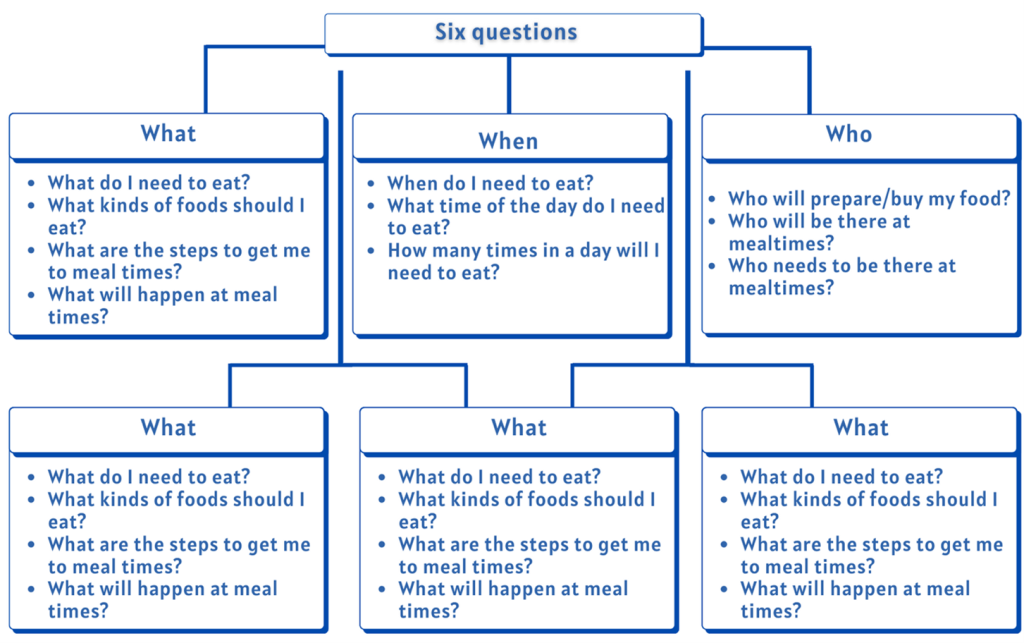Every social story™ includes specific information that answers six questions:
What, When, How, Where, Who, and Why
Answering these questions in a social story™ can help you be better prepared by knowing what to expect in a certain situation or event. It can also help to improve a person’s understanding of something they may have previously found difficult or struggled with.
How do I write one?
Step one – Gather information
The first step to creating a social story is to gather information. To do this, you will need to identify areas that you are finding difficult or struggling to understand.
Once you have highlighted a potential difficulty, continue gathering information by finding answers to the six questions mentioned above. For example, if the difficulty was remembering to eat food, some questions you might ask when gathering information could include:

Step two – Picture the goal
Now that you have gathered your information, the next step is to choose a topic that ‘fits’ the audience, their interests, and their needs. For example, if we continue with the above theme, you may decide your topic is ‘Remembering to eat food at school’
Step 3 – Tailor the text
Use the information you collected from steps one and two to create your social story by putting the information together. When writing your social story be sure to:
- Format your social story™ so that it has:

Here are a few other tips for writing your social story™;
- Create personalised text and illustrations that match your topic
- Use gentle and supportive language that is direct and clear to help make your social story as clear and straight forward as possible
- Use descriptive sentences to provide detail for example:
‘When the school bell rings at 12.00pm, I know it’s time for lunch. I will pack my things away and get ready to go to foyer where I will eat my lunch.’
- Use coaching sentences when needed, for example:
‘When I get to the foyer, I may have to wait in a queue to get inside. Once I am in the foyer, I will find myself a space and sit on a chair at a table. I will eat my lunch with my classmates.’
- Avoid using any negative language; social stories are always positive, remember their purpose is to inform through guidance
Review your work
Once you have finished writing your social story™ read it through and ask yourself:
- Was it clear and concise?
- Do you understand all the information that has been given?
- Do you feel better prepared to complete the steps listed?
You can make changes at any point to your social story™ by editing the text or changing the images to suit you better.
Once you are happy with your social story™, take a moment to congratulate yourself on completing it, great job!


